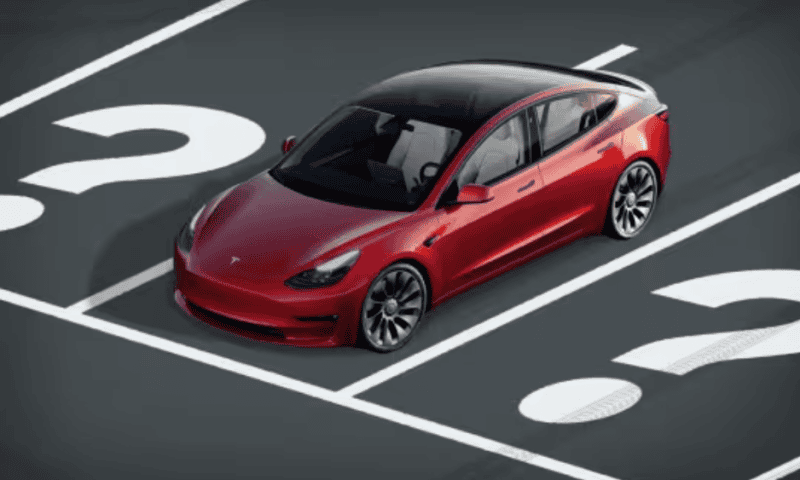EV doubters like Toyota bet on hybrids, and now look prescient
As consumers start to shy away from EVs, their choice will affect not just the car industry, but U.S.-China relations, state budgets and commodity prices.
In the early 1990s, every self-respecting American yuppie and retired suburban couple bought an electric bread maker, with sales hitting 4 million units. But the fad soon faded as these amateur bakers discovered that stuffing a precise quantity and ratio of flour, eggs, butter, yeast and salt into a metal box takes time and costs much more than strolling to the corner bakery.
Are plug-in electric vehicles the bread makers of our day?
Despite Tesla TSLA, +0.34% Chief Executive Elon Musk’s entrepreneurial brilliance and billions of dollars in U.S. government subsidies to support EVs, it appears that consumers still prefer to drive to a gas station for a five-minute fill-up than to retrofit their garage and suffer the range anxiety that comes from hunting for a charging station in the parking lot of an abandoned shopping mall. J.D. Power reports that 21% of public chargers do not work in any case. As consumers start to shy away from EVs, their choice will affect not just the car industry, but U.S.-China relations, state budgets and commodity prices.
The evidence is rolling in fast. Earlier this month, Hertz HTZ, -1.48%, which purchased 100,000 Teslas to great fanfare in 2021, executed a squealing 180-degree turn and began dumping one-third of its EV fleet, taking a $245 million charge against its earnings. Its pledge to buy 175,000 EVs from GM GM, +0.06% will likely go up in smoke, too.
EVs tend to sit on dealer lots for about three weeks longer than gasoline-powered cars.
Outside of wealthy, trendy communities, consumers are walking past plug-in EVs and snapping up hybrids and gasoline-powered engines instead. In the fourth quarter of 2023, EV sales crawled up by just 1.3%. According to Edmunds, EVs tend to sit on dealer lots for about three weeks longer than gasoline-powered cars. With Mercedes Benz MBG, +2.53% EQS units languishing for four months, the company’s chief financial officer recently acknowledged that the market is a “pretty brutal space.” Customers are staying away despite a price war in which Ford F, +0.44%, Tesla, and GM slashed EV prices by 20%, on average, leading Ford to lose $36,000 on each unit sold.
State governments have been pumping EVs with enormous subsidies, even as their own budgets are bleeding red.
At the same time, state governments have been pumping EVs with enormous subsidies, even as their own budgets are bleeding red. California still pours $7,000 into each new EV (on top of the maximum $7,500 federal credit), despite reporting a record $68 billion budget deficit. New Jersey sends a $4,000 check to EV buyers, despite shrinking revenues. How long can these states keep the money spigot open?
EV doubters like Toyota 7203, 3.39% — which instead bet on hybrids — now look prescient. Over the past year, Toyota’s share price outperformed GM’s by 40%. After taking flak from EV enthusiasts and Wall Street analysts, Toyota Chairman Akio Toyoda declared last October that people are “finally seeing reality.” Automobile unions surely are relieved, considering that EVs require 90% fewer parts and 30% fewer man-hours to manufacture.
None of this diminishes the ingenuity of EV engineers and designers. Watching smart cars race and then parallel-park themselves, it’s hard to believe that they were once dismissed as golf carts with hood ornaments. Musk has been called many things — some of them unprintable — but his cars outrun Porsches, his rockets soar past NASA’s, and his brushes with insider trading leave Securities and Exchange Commission lawyers in the dust.
Still, that does not mean he always wins. EVs face obstacles even beyond physics and consumer inertia: Namely, a faulty electrical grid. More Americans today are spending more hours sitting in the dark. The U.S. Energy Information Administration reports that between 2013 and 2021, the average duration of a blackout doubled, from 3.5 hours to more than seven hours, while their frequency jumped by nearly 20%. No wonder people are reluctant to tie their mobility to a wall plug, especially given doubts about the reliability of renewable-energy sources like solar and wind, which will always be vulnerable to clouds and stagnant air.
The U.S. is not alone, of course. China’s BYD 002594, -2.47% (“Build Your Dreams”) automaker recently earned headlines for selling 3 million EVs last year, compared to Tesla’s 1.8 million. Yet the wobbly Chinese economy is vulnerable to weaker U.S. sales. The Chinese government and private sector have bet big on battery production and on countries like Zimbabwe, the Democratic Republic of the Congo, Cuba and Russia, which mine lithium, cobalt, cadmium and other key minerals. But will China continue to buy off African political leaders as these commodity prices slump? How long will that spigot stay open?
The 1990s bread-machine fad never benefited from public subsidies, government mandates or furious discounting to gain market share. If it had, perhaps it would have continued for a few more years. EVs have been promoted by presidents, governors, the IRS and tech wizards. But the public isn’t listening. President Dwight D. Eisenhower, who looked great in a 60-horsepower jeep, once warned that “you don’t lead by hitting people over the head: That’s assault, not leadership.” In the automobile market, the internal combustion engine is still in the lead.
Todd G. Buchholz, a former White House director of economic policy under President George W. Bush and managing director of the Tiger hedge fund, is the recipient of the Harvard Department of Economics’ Allyn Young Teaching Prize. He is the author of New Ideas from Dead Economists (Plume, 2021), The Price of Prosperity (Harper, 2016), and co-author of the musical Glory Ride.

